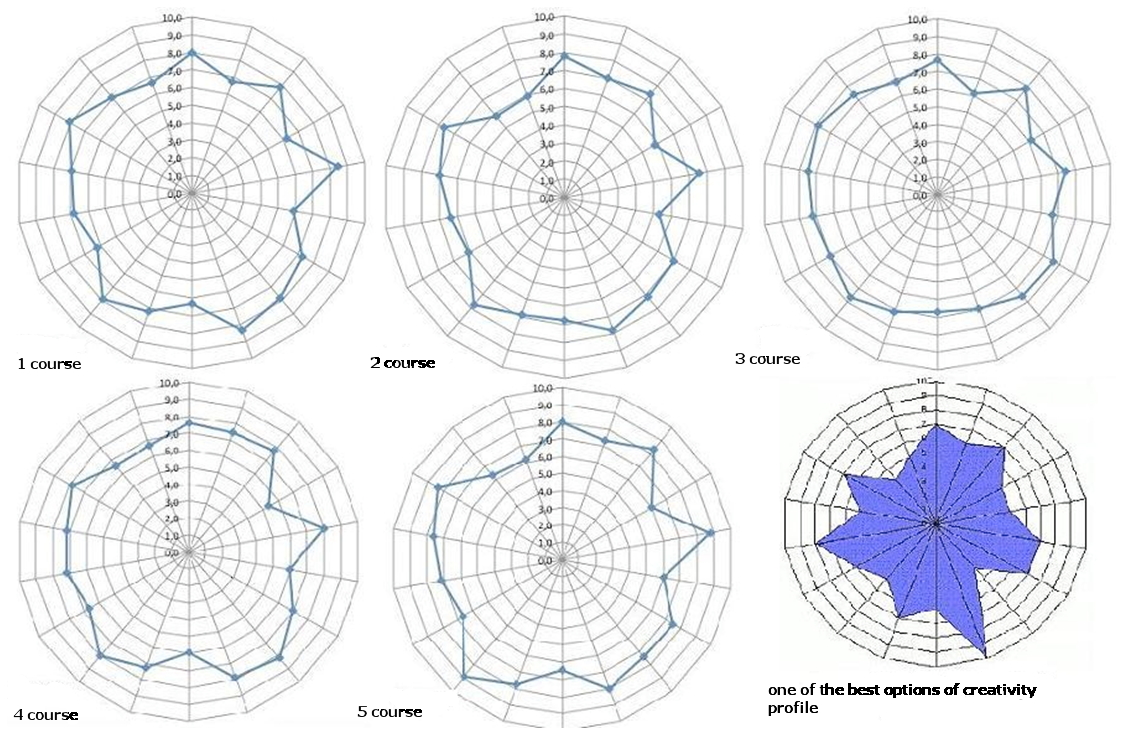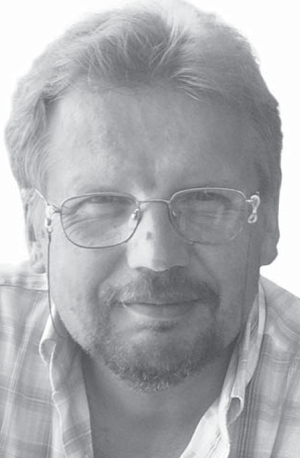EDUCATIONAL PERSPECTIVES OF UNIVERSITY ENVIRONMENT IN DEVELOPMENT OF CREATIVE POTENTIAL OF STUDENTS OF SPORTS FACULTY
Фотографии:
ˑ:
V.D. Povzun, professor, Dr.Hab.
A.A. Povzun, associate professor, Ph.D.
V.V. Apokin, associate professor, Ph.D. Surgut state university, Surgut
Key words: creative potential, gender preferences, self-appraisal.
The need for development of the new creative pedagogics based on the philosophy of creativity is an important objective of the modern society, which can be fully applied to sport and physical culture, where the activation of trainer’s creative potential with an active subjective position is a priority when training elite athletes. Person’s efforts were assumed as a drive for high self-worth in the personal creative development [6] due to diversity of theoretical definitions of creative activity and the concepts of "creativity", "creative potential” and “creative thinking” [1-5]. But the self-worth drive can be realized in different ways, depending on the external and internal conditions. Therefore, the relevance of the study is defined on the one hand, as the objectives of modernization of the modern Russian educational system, focused on formation and development of creative competitive personality, and, on the other hand, the entirely new meaning of the concept of creativity and thus new methods of its evaluation and development. Within the quoted approach self-appraisal was used as one of the most affordable and adequate methods of analysis of personality development and Sharov’s creativity test as a criterion of students' expected creativity level [7]. The study was conducted at the faculty of physical culture of Surgut State University, during the 2011-2012 academic years on all courses of study. The study involved 257 male and female students of the faculty of physical culture at the age of 18-23 years old.
Our results of creativity self-appraisal are presented in Table.
For clarity we designed the profile of creative qualities for students of all courses in particular. The result was adduced in Figure.

Fig. Profile of creative potential of 1-5-year students of Surgut State University, faculty of physical culture
Unfortunately, the priority personal qualities for every student cannot be identified by such a graphical interpretation of results, but it reveals the full idea of the structure of creative potential and its change with time. And it is the time-picture that shows no fundamental changes in the total profile of students’ creative potential within five years of study. In our case, first of all, it suggests that university as an educational institution and university education itself is not of primary importance in development of creative qualities of young people. It is not a tragedy for a sports faculty since athletes aimed at achievement of sports result first of all have other places and situations to realize their creative abilities as a “self-worth drive”. But if the university seems it necessary to influence development of athletes’ creative potential than its primary goal is to find some adequate ways to provide such an influence.
It is quite different with the profile structure. When realizing self-worth via a very specific (in this case, sports) activity a specific, directed peak of specified personal quality should take place (like in the shaded area of the diagram) in the structure of the chart, even for a large number of people, which reflects the key direction of creative significance being realized. However, it’s hardly seen in the structure of our students’ creative potential indicating to some other processes implied by the high self-worth. Moreover, such a levelled graphic picture is typical for the non-optimal variation of self-appraisal when a person claims on his self-worth, but it does not have any psychological or other grounds for its realization.
Technically, we have not identified people with non-optimal level of self-appraisal. It gives us an idea that actions made for development of creative potential should be organized in a completely different way, aiming not only at development, but at the use of students’ creative potential. However, anyone with the experience in organization of students’ activities beyond the standard rules or with no guarantee of success, faced the intention to avoid it, which is hardly possible due to high level of creative potential. The "levelled" profile structure we have mentioned before is assumed a reflection of the quoted condition, indicating to both inadequately low and high self-appraisal and big claims. In this case, confidence is based not on success, but on the lack of failure, and this confidence is getting inadequately high. First failures are ignored, explained by contingencies, external causes, repeated failures are accompanied by strong emotional reactions, sometimes affective, which may provoke reduced motivation for this activity and even its denial. Inadequacy affect is a strong emotional state mainly stipulated by resistance of the set stereotype of ego-enhancing distortion. According to the profile picture, characterized by the total lack of any activity, this is what happens with the third-year students, which is also proved by the total lack of people with low self-appraisal. Thus the university not only has an opportunity but needs to organize its work in the direction of restructuring of creative potential, adjusting it to the challenges of the modern society and thus relieving the tension between the university and a personality.
We understand that the results we obtained are preliminary and the issue requires further study. It can be understood to the full in case of identifying the personal qualities priority for creative potential. But it is clear already that education as an efficiency index of educational process being realized at higher school can be enhanced not only by studying of students’ psychological features and giving them psychological support in the university, especially during the first years of studies, but fundamentally changing their attitude to learning and creating new environments for personal development within university education. Only a person capable of realizing his creative potential to the maximum in various environments can estimate it adequately and be efficient in his self-actualization in the future.
The objective of the university is to provide this opportunity for a person.
References
1. Anan’ev, B.G. Man as an object of cognition / B.G. Anan’ev. – St.Petersburg: Piter, 2001. - 288. (In Russian)
2. Vygotsky, L.S. On psychology of actor’s creativity. Part 2 / L.S. Vygotsky // Coll. works. - Moscow, 1984. - S.321. (In Russian)
3. Altshuler, G.S. Psychology of inventive creation / G.S. Altshuler, R.B. Shapiro // Questions of psychology. - 1956, № 6. - S. 37-49. (In Russian)
4. Druzhinin, V.N. Psychology of general abilities / V.N. Druzhinin. - St.Petersburg: Piter, 2002. - P. 166. (In Russian)
5. Sal’nikov, V.A. Talent, endowment and abilities in the structure of sports activity / V.A. Sal’nikov // Teoriya i praktika fizicheskoy kultury, 2002. - N 4. - P. 16-20. (In Russian)
6. Sharov, A.S. Reflection in personal development // Proceedings of the conference "Reflection, education and intellectual innovation." - Novosobirsk, 1995. - P. 224 - 225. (In Russian)
7. Sharov, A.S. The system of value orientations as a psychological mechanism of regulation of human life: doctoral thesis (psychology). - Novosibirsk, 2000. - 383 P. (In Russian)
Author’s contacts: apokin_vv@mail.ru



 Журнал "THEORY AND PRACTICE
Журнал "THEORY AND PRACTICE